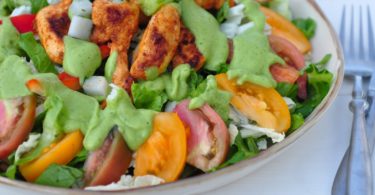Belly fat, often deemed the most stubborn and visually prominent type of fat, can be a source of frustration for many individuals on their fitness journey. Beyond aesthetic concerns, excess abdominal fat is associated with an increased risk of various health issues. In this comprehensive guide, Losing Belly Fat we will explore the science behind belly fat, the factors influencing its accumulation, and the best strategies to shed those inches around your midsection.
Understanding Belly Fat
Before delving into effective strategies, it’s crucial to understand the different types of belly fat. Subcutaneous fat lies just beneath the skin, while visceral fat surrounds internal organs. While subcutaneous fat is relatively harmless from a health perspective, excess visceral fat is linked to insulin resistance, inflammation, and an elevated risk of conditions like heart disease and type 2 diabetes.
Factors Contributing to Belly Fat
Several factors contribute to the accumulation of belly fat, including genetics, hormonal fluctuations, poor dietary habits, sedentary lifestyle, and stress. Losing Belly Fat Addressing these factors holistically is key to achieving long-term success in losing belly fat.
Balanced Diet
A crucial aspect of losing belly fat is adopting a balanced and nutritious diet. Focus on whole, nutrient-dense foods such as fruits, vegetables, lean proteins, and whole grains. Weight loss supplement Minimize intake of processed foods, sugary beverages,
Caloric Deficit
Creating a caloric deficit, where you burn more calories than you consume, is fundamental to losing any type of body fat, including belly fat. However Losing Belly Fat, it’s important to achieve this deficit through a combination of diet and exercise rather than extreme calorie restriction, which can lead to muscle loss and metabolic slowdown.
Regular Exercise
Incorporating both aerobic exercises and strength training into your routine is crucial for targeting belly fat. Aerobic exercises like running, swimming, or cycling help burn calories, while strength training builds muscle mass, boosting your resting metabolic rate. Focus on full-body workouts that engage multiple muscle groups.
High-Intensity Interval Training (HIIT)
HIIT involves short bursts of intense exercise followed by periods of rest or lower-intensity activity. This approach has been shown to be effective in burning calories and promoting fat loss, including abdominal fat. Examples of HIIT exercises include sprints, burpees, and jumping jacks.
Adequate Sleep
Poor sleep quality and insufficient sleep duration can disrupt hormonal balance, leading to increased cravings for high-calorie foods and weight loss, especially around the abdomen. Aim for 7-9 hours of quality sleep per night to support overall health and weight management.
Stress Management
Chronic stress can contribute to abdominal fat accumulation through the release of cortisol, a stress hormone. Incorporate stress-reducing practices such as meditation, yoga, deep breathing exercises, or hobbies to help manage stress levels.
Hydration
Adequate hydration is crucial for overall health and can support weight loss by promoting satiety. Additionally, drinking water before meals may help reduce calorie intake. Aim for at least 8 glasses of water per day.
Healthy Fats
Incorporate healthy fats, such as those found in avocados, nuts, and olive oil, into your diet. These fats can promote satiety and contribute to a balanced diet while avoiding the negative effects associated with excessive consumption of saturated and trans fats.
Conclusion
Losing belly fat is a multifaceted process that requires a holistic approach encompassing diet, exercise, sleep, and stress management. Adopting sustainable lifestyle changes is crucial for long-term success. While spot reduction (losing fat from a specific area) is not entirely possible, the aforementioned strategies collectively contribute to overall fat loss, including the stubborn belly fat. Consult with healthcare professionals or fitness experts to tailor a plan that suits your individual needs and goals. Remember, patience and consistency are key on the journey to achieving a trim and toned midsection.
Intermittent Fasting







